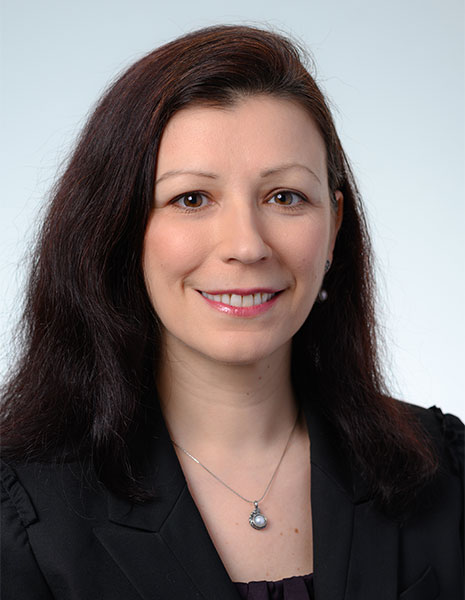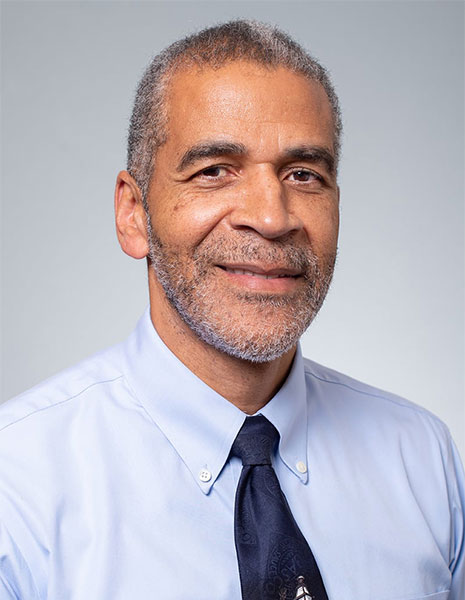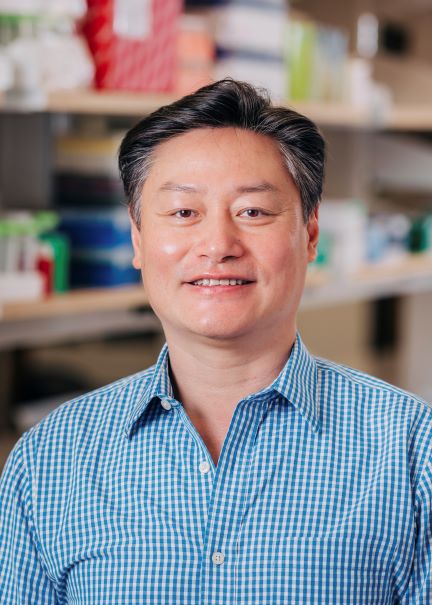The Global Center for Craniofacial, Oral and Dental Disorders (GC-CODED) has awarded pilot and feasibility grants to four UAB investigators for their research in areas related to conditions of the craniofacial/ oral complex and dentition.
“Typically we provide two awards but this year we were pleased to be able to award $140,000 in total funding for multiple projects,” says Amjad Javed, Ph.D., associate dean for research and GC-CODED director. “These awards are a testament to these investigators and their hard work, dedication, and innovative contributions to oral and craniofacial research.”
Awardees
 Hope M. Amm, Ph.D.
Hope M. Amm, Ph.D.
“Interactions between oral cancer cells, Enterococcus faecalis, and human papilloma virus to impact tumor progression”
Amm is an assistant professor in the Department of Oral and Maxillofacial Surgery. Her research focuses on oral tumors, including odontogenic tumors and squamous cell carcinomas. Her long-term research goal is to conduct translational research to elucidate cellular signaling within human tumors and cancers for the development of better diagnostics and treatments.
Interested in how particular bacteria found in the oral cavity affect the growth and spread of oral and throat cancer, Amm’s team has found that there is a difference in how HPV+ cancer cells respond compared to HPV- cancers. Ultimately, they hope to use GC-CODED funding to lay the foundation for developing small molecule inhibitors to these bacteria for the treatment of oral and oropharyngeal cancer.
“Pilot awards, like the one awarded by GC-CODED, are so very important to starting and developing new projects, which may be important but not ready for big funding agencies yet. It allows us to lead our research into new and exciting areas,” says Amm.
 Ejvis Lamani, D.M.D., Ph.D.
Ejvis Lamani, D.M.D., Ph.D.
“Understanding the Genetic Disorder of Short Root Anomaly”
Lamani is an assistant professor in the Department of Orthodontics. She is a clinician scientist with advance training in Orthodontics specializing in craniofacial growth and development. Her interest lies on craniofacial biology and genetics with emphasis on dental development and related human genetic disorders. Her research aim is to translate the molecular biology and genetics of human growth and development to the treatment and future prevention of craniofacial and dental anomalies.
Lamani’s team will use GC-CODED funding to investigate new molecules in root developmental anomalies such as Short Root Anomaly (SRA), a poorly understood genetic disorder characterized by short dental roots with significantly reduced crown to root ratios. Their goal is to examine genetic mutations associated with this disorder and delineate the mechanism by which they contribute to altered root formation. Information gleaned from this work may be used in establishing biomarkers for SRA as well as the generation of future studies focusing on therapeutic interventions for prevention and management of this disorder.
Lamani says, “We are very excited to start our work on the GC-CODED funded project, which will allow us to undertake this important effort.”
 Patrick Louis, D.D.S., M,D.
Patrick Louis, D.D.S., M,D.
Identifying gene circuitry of idiopathic condylar resorption by evaluation of patient tissues
Louis is the McCallum Endowed Professor and chair of the Department of Oral and Maxillofacial Surgery. His research interests include Temporomandibular Joint Disorders (TMJ), trauma, dental implants, cosmetic surgery, orthognathic surgery, pathology, reconstructive surgery, and aesthetic surgery.
Idiopathic condylar resorption (ICR), is an uncommon degenerative disease of the temporomandibular joint (TMJ), sometimes of an aggressive nature that is seen mostly in female adolescents and young women. Pathognomonic features of this condition include a loss of condylar mass, thereby decreasing the height of the ramus and length of the mandible. This can result in mandibular asymmetry, a shift of the mandible to the affected side with an open bite on contralateral side, mandibular retrognathia, or no change in mandibular position.
Louis and his team will study skeletally mature patients with advanced ICR. These patients have loss of the mandibular condyle(s) with progressive anterior open bite and/or retrusion of the mandible. Many of these patients have previously undergone orthodontics and jaw surgery but due to the progressive loss of the condyle(s), there is relapse of the malocclusion. These patients have the option of a stable occlusion with prosthetic joints.
“Though condylar resorption is well documented in the literature dating back to 1961, idiopathic condylar resorption has only been described and recognized more recently,” says Louis. “If we are able to characterize the pathophysiology that causes ICR, we hope to come up with a classification system that will help us make systematic decisions on the types of treatment that would be most beneficial for the affected patient.”
 Jianbo Wang, Ph.D.
Jianbo Wang, Ph.D.
“Wnt5a-initiated non-canonical Wnt signaling in craniofacial development and disease”
Wang is an associate professor in the Department of Cell, Developmental and Integrative Biology.
“In addition to containing key organs for eating, breathing, seeing and hearing, our face displays distinct morphological features that are central to our individual identity and social life,” says Wang. “Consequently, congenital disorders that cause craniofacial dysmorphism may significantly affect both physical and mental health, compromising patients’ quality of life.”
Wang focuses on patients with Robinow syndrome, who display distinctive craniofacial dysmorphism that include depressed nasal bridge and high, broad forehead, cleft lip/ palate and dental anomalies. Robinow syndrome is associated with gene mutations that impact WNT5A-initated cell signaling events.
His team has found that WNT5A signaling primarily acts within cranial neural crest cells to regulate craniofacial development. Neural crest cells arise at the dorsal neural tube (the future spinal cord) then migrate to the craniofacial region to form the bones and nerves of the face. They will use state of the art imaging techniques and single cell genomic technology to determine how Wnt5a regulates migration of neural crest cells and subsequent development of craniofacial structures.
This study combines expertise in Wnt5a signaling from the Wang lab, skeletal biology from the Serra lab, and genomic expertise from the Hassan lab to provide the first in-depth characterization of Wnt5a at the molecular, cellular and tissue level during mammalian craniofacial development. The study will shed light on the mechanism of pathogenesis for craniofacial dysmorphism in Robinow syndrome laying a foundation for future therapeutic strategies for Robinow and other related craniofacial dysmorphism.
“This award will further strengthen a productive collaboration between the Serra and Wang labs, which seeks to empower diagnosis and regenerative therapies for congenital disorders by defining the action of non-canonical Wnt signaling in the skeletal system,” says Wang. “It will also help us to develop a new collaboration with Dr. Hassan who has complementary expertise in single cell genomic technology.”
Wang says the data generated from this award will help his team develop an impactful and rigorous MPI R01 proposal for NIH/NIDCR.
A University-Wide Interdisciplinary Research Center (UWIRC), GC-CODED is an inter- and multi-disciplinary integrated center providing a focused forum for the development of novel therapies, training of students, residents, and faculty, and education of the community in areas related to conditions of the craniofacial/ oral complex and dentition.